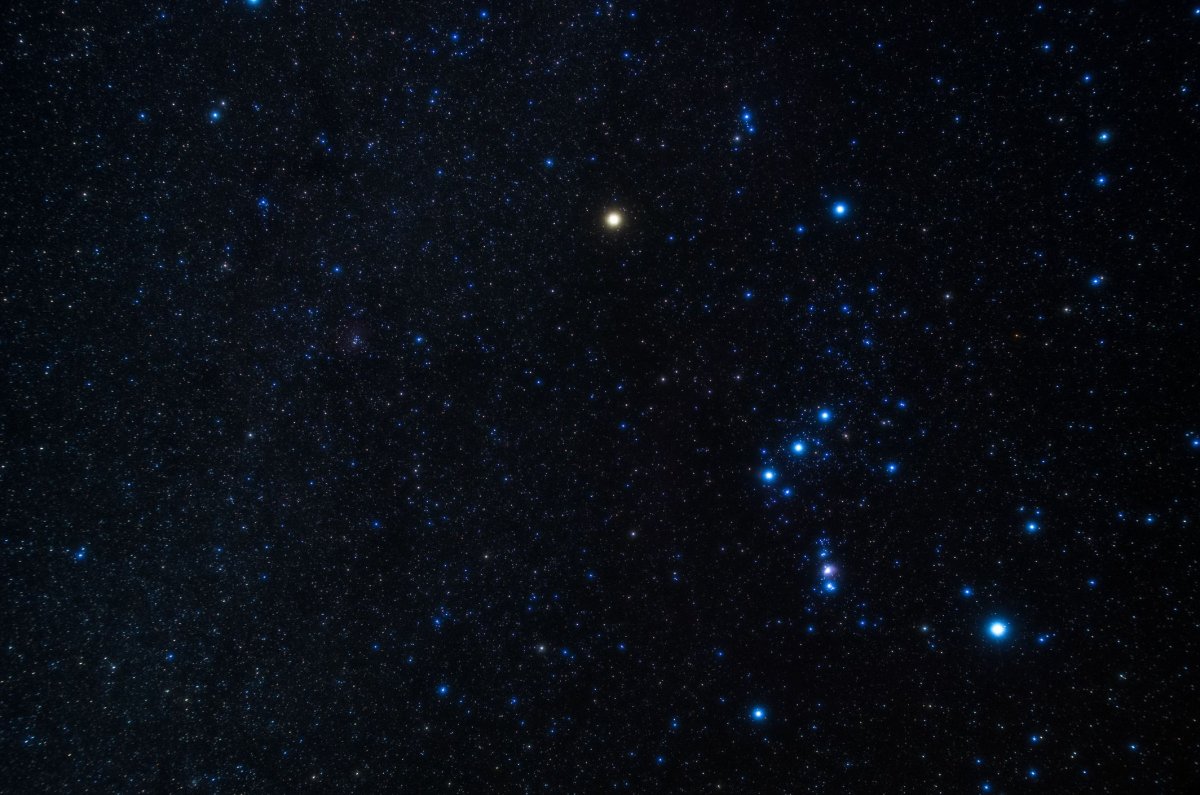The Orionid meteor shower will peak on October 21 and 22 and this year is expected to produce between 15 and 20 meteors per hour.
This year's shower is a little on the slow side—on good years it can produce up to 80 meteors per hour. Another obstacle is the moon. This year the Orionids comes shortly before a full moon, on October 24, meaning the light from it will make spotting any shooting stars more difficult.
But all is not entirely lost. The annual shower has been visible in the night sky since October 2 and will last until November 7.
The meteor shower peaks on the morning of October 21, just before dawn. However, if you go out in the early hours in the days before the peak, you will avoid as much of the glare from the moon as possible—potentially making meteor spotting a little more successful.
Meteor showers take place when the debris from passing comets hit Earth's atmosphere at extremely high speeds. These tiny space rocks vaporize, producing a bright flash that travels across the sky.

The Orionids comes from comet 1P/Halley—more famously known as Halley's Comet. This is a periodic comet that comes into the vicinity of Earth about once every 76 years. It was famously recorded passing Earth in 1066. Observers in England thought this was a bad omen—and later that year King Harold II was killed at the Battle of Hastings, making way for William the Conqueror.
The last time it was visible to Earth observers was 1986 and the next time it will enter the inner solar system is 2061.
The radiant (the point in the sky the meteors appear to come from) is the constellation Orion. NASA notes you should not look to the constellation to see the meteor shower.
Providing some extra viewing tips, the space agency said: "The Orionids are viewable in both the Northern and Southern hemispheres during the hours after midnight. Find an area well away from city or street lights. Come prepared with a sleeping bag, blanket or lawn chair. Lie flat on your back with your feet facing southeast if you are in the Northern Hemisphere or northeast if you are in the Southern Hemisphere, and look up, taking in as much of the sky as possible.
"In less than 30 minutes in the dark, your eyes will adapt and you will begin to see meteors. Be patient—the show will last until dawn, so you have plenty of time to catch a glimpse."
Uncommon Knowledge
Newsweek is committed to challenging conventional wisdom and finding connections in the search for common ground.
Newsweek is committed to challenging conventional wisdom and finding connections in the search for common ground.
About the writer
Hannah Osborne is Nesweek's Science Editor, based in London, UK. Hannah joined Newsweek in 2017 from IBTimes UK. She is ... Read more
To read how Newsweek uses AI as a newsroom tool, Click here.








